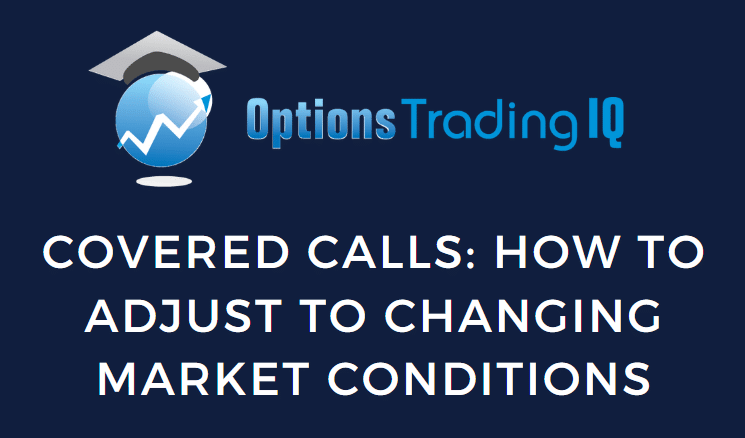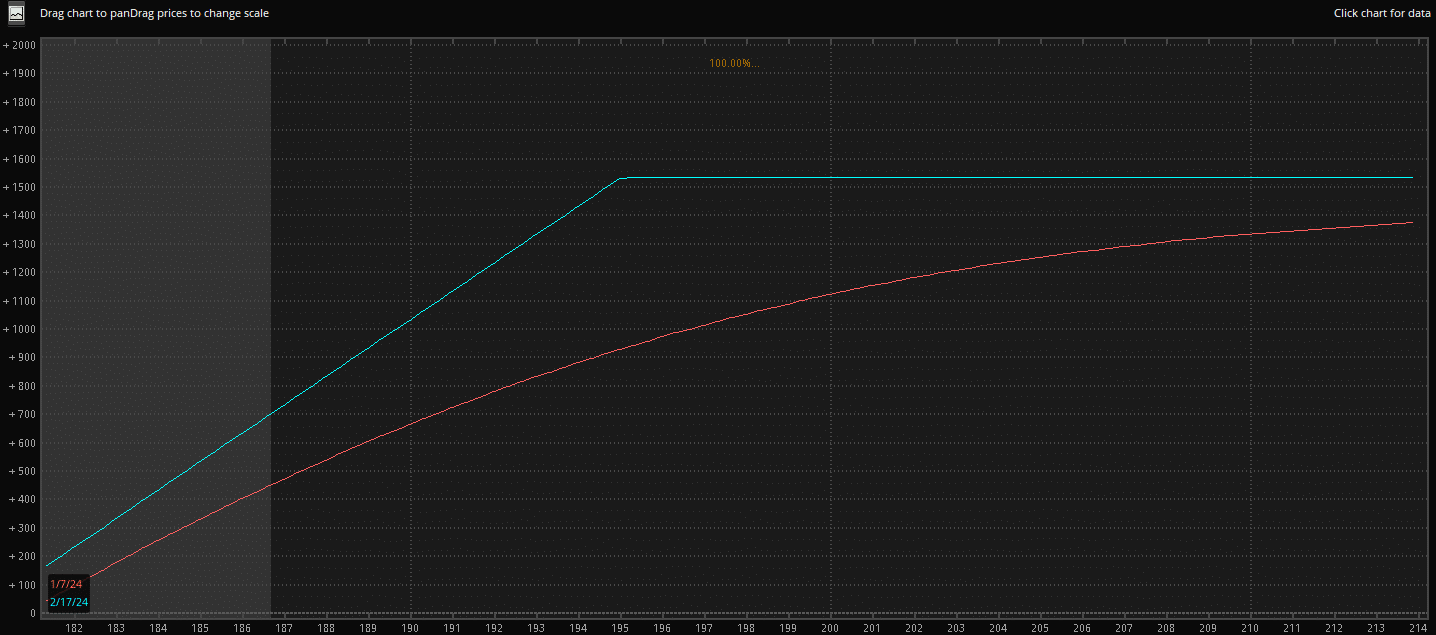

Covered calls are one of the most popular options trading methods and provide many investors with an additional source of income on an existing equity position.
When price action starts to move against you, though, and your covered call is on the verge of being exercised, there are a few techniques an advanced trader can employ to keep the position profitable.
Here, we will go over when and why a trader would want to adjust their covered call position and a few techniques to adjust it successfully.
Contents
Covered Call Recap
Before diving into the nuances of adjusting, let’s revisit the basics first.
A covered call involves holding a long position in a stock while simultaneously selling call options against it.
This strategy is geared towards generating additional income from the theta decay on the option.
The best price action for covered calls is typically sideways to moderately bullish.
This allows the investor to capture all the premium without losing much value in the underlying stock.

While the income potential is obvious to many traders, there are a few potential drawbacks.
First and foremost, it caps the potential of the underlying stock.
A trader loses on the additional upside if a stock rallies past the sold strike.
Second, this strategy provides limited downside protection other than the income received.
If the stock falls by more than this amount, a trader is now at a loss on the overall position.
Reasons to Adjust
Now that you are refreshed on what a covered call is, and its potential drawbacks let’s look at why a trader would want to adjust their position.
There are many reasons a trader would want to adjust their covered call positions, but they can mostly be grouped into one of three main categories:
- To capture more upside potential: If the stock price starts to advance faster than originally expected, it may make sense to re-evaluate the strike selection to capture more of the upside move.
- To adjust for a downside move: Conversely, if the stock price starts to drop more than expected, it might be possible to collect some additional premium by moving the strike and keeping the expiration the same
- To extend the date: Occasionally, a stock price will barely move, and after the majority of the decay has been captured, it might be worth it to close the position and open another one further out.
Adjustment Techniques
Now that we know why we want to adjust our covered call, it’s time to decide how best to adjust the position.
Below are some ways that a covered call can be adjusted and a typical situation in which they might be used.
- Rolling Out: This involves closing the current option position and opening another with a later expiration date. It’s a move typically considered when the call option is nearing expiration, but you believe the stock still holds potential. Rolling out buys more time and is often used when you want to extend the date and collect more premium on the trade.
- Rolling In: This is far less common but occasionally necessary, and this is when you close the open options to sell a strike closer to the current date. One possible reason to do this would be after a recent price correction. As the price falls, you can capitalize on the short-term implied volatility by selling strikes closer to expiration.
- Rolling Up: In a rising market, your covered call might come ‘in the money’ sooner than anticipated. You can roll up to avoid an early assignment and capitalize on the stock’s upward trajectory. This means closing the current position and opening another with a higher strike price. This adjustment can be tricky because you may buy back your current contract at a small loss. A potential rule for trending stocks is to set a stop loss at breakeven and use that as an opportunity to roll up.
- Rolling Down: Contrary to rolling up, this strategy comes into play when the stock price dives. Here, the aim is to protect against further downside risk. By rolling down, you close the existing call position and open a new one with a lower strike price. This maneuver adjusts the position to align with the new, lower stock price, potentially increasing the premium income while still offering some downside protection.
- Combinations: Combination adjustments are by far the most popular and likely you would hear about most often. These include the Out and Up, Out and Down, In and Up, and In and Down trades. As the names suggest, you are changing both the strike and the amount of time to expiration. An example of perhaps the most common is Rolling Up and Out. To do this, a trader would close their current call and sell another one that is further dated and at a strike higher than the originally sold call.
- Closing Early: Sometimes, the best adjustment is no adjustment at all, and it is to simply close the trade.
Considerations Before Adjusting
We have explored some possible reasons why a trader would want to adjust a covered call, and we have looked at some techniques that show you how to adjust your covered calls.
But how do you know if you should adjust the position or just close it and wait?
Here is a short checklist of things to consider before adjusting your covered call.
- New Risk/Reward Profile: Each adjustment alters the risk-reward profile of your position. Ensure that the new trade aligns with your overall risk tolerance and objectives.
- Transaction Costs: Frequent adjustments can rack up significant transaction costs, which may eat into your overall profits. With many brokers having low or no commission options trades, this is less important now, but exchange fees still can cut into profits. Is the profit gain worth the fees?
- Market Analysis: Does this adjustment make sense in the broader market content? If the market is ripping higher, rolling in and down may not be prudent. Similarly, if the market is dropping like a stone, rolling up and out may not be the best move.
- Position Goals: Will this adjustment fit with the goal of this position? If you opened a long stock position only to sell premium on it, it may be worth it just to close the entire position. If the underlying is something you plan on holding for an extended period, adjusting the covered call to make some additional income may be a great move.
Conclusion
Covered calls are a popular strategy for generating additional income on existing equity positions.
However, they come with their own set of advantages and disadvantages.
To make the most out of covered call positions, traders often find themselves in situations where adjustments are necessary.
These adjustments can be made for various reasons, such as capturing more upside potential, adjusting for a downside move, or extending the expiration date.
Ultimately, adjusting or closing the position depends on individual circumstances and market conditions.
By understanding when and how to adjust covered call positions, traders can enhance their ability to navigate the options market effectively and make informed decisions to maximize profitability.
We hope you enjoyed this article on how to trade covered calls in changing market conditions.
If you have any questions, please send an email or leave a comment below.
Trade safe!
Disclaimer: The information above is for educational purposes only and should not be treated as investment advice. The strategy presented would not be suitable for investors who are not familiar with exchange traded options. Any readers interested in this strategy should do their own research and seek advice from a licensed financial adviser.
Related Articles
Selling Covered Calls – A Detailed Guide
How To Write Covered Calls: 2024 Ultimate Guide
Weekly Versus Monthly Covered Calls
How To Make Money With Covered Calls
When to Roll Covered Calls
Selling Deep In The Money Covered Calls: Why Do It?
Covered Calls For Dummies
Covered Calls With LEAPs Options Strategy
Supercharge Your Covered Calls Using LEAPS
Selling Weekly Covered Calls
Covered Calls 101










